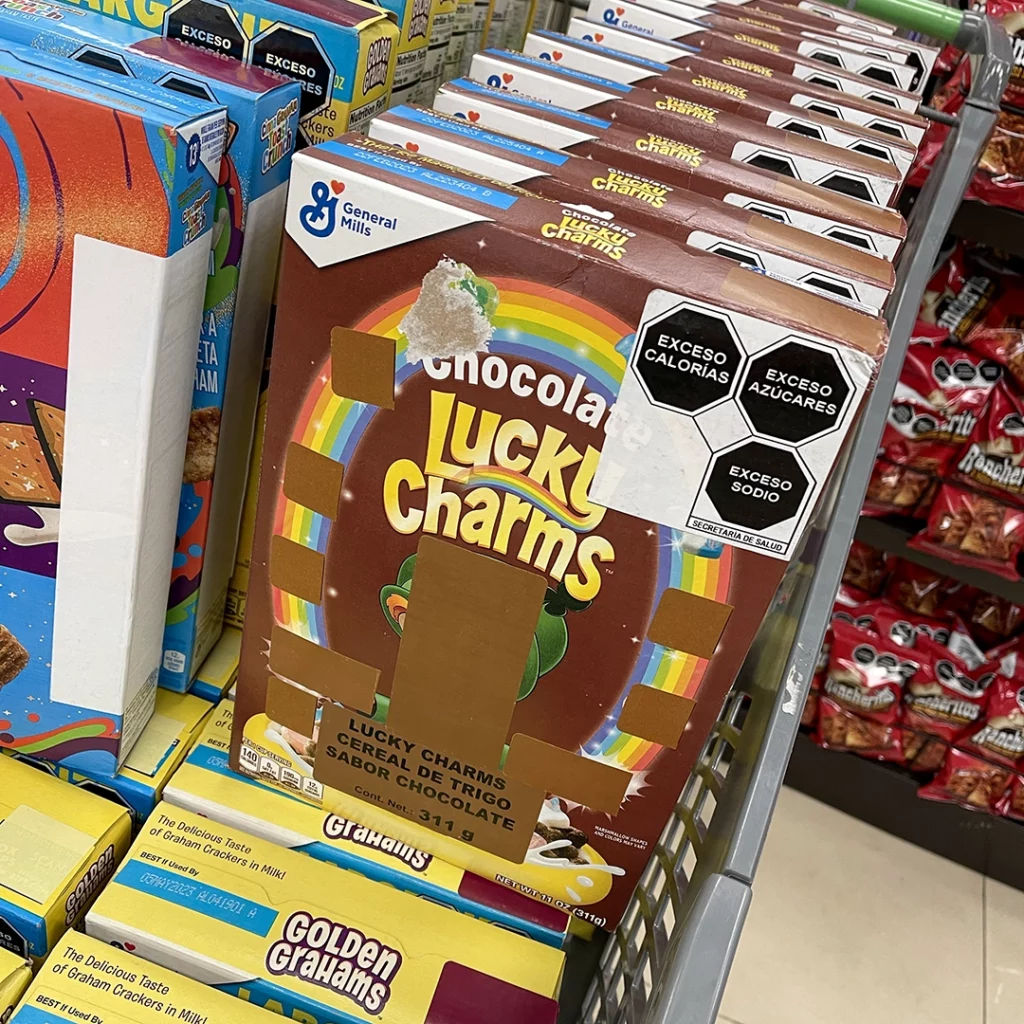In 2021, México banned cartoon mascots from appearing on the packaging for food and drink products marked with bold octagonal ‘sellos’ (‘seals’), like ‘exceso calorías’ (excess calories), ‘exceso azúcares’ (excess sugar), and ‘exceso grasas saturadas’ (excess saturated fats). The idea: curb growing childhood obesity by outlawing the captivating characters who made the products appealing to kids.
I didn’t just walk into the shop to find clean tiger- and toucan-free cereal boxes one morning, though. No, the transition was a far more beautiful mess.
I first learned of the new law when a sticker-ravaged box of Lucky Charms caught my eye. It wasn’t just the leprechaun fella who’d been covered up, though — some poor shopkeeper had been tasked with masking all the colourful marshmallow bits, too.

This is how it was for a while, until old inventory ran out.
By then, the capitalists had already figured out ways to outsmart the ban: they simply started ‘hinting’ at the characters rather than outright removing them. On Zucaritas (Frosties in the UK, Frosted Flakes in the US), a few orange-and-black stripes from Tony the Tiger’s arms were still visible on the edges of the box.
On the Fruit Loops box, you could still see the tip of the toucan’s beak, and some of its feathers.
Nestlé took a different approach with some of their products, like the cereal based on their ‘Carlos V’ chocolate. Usually, the cereal and the chocolate features a mascot based on the real Holy Roman emperor Charles V. Nestlé eschewed the character but placed his crown over the ‘C’ in ‘Carlos’ — a more subtle visual nod than the ones Kellogg’s snuck in.
Around the same time I saw these snidely-redesigned boxes popping up, I also noticed the mascots reappearing in full on ‘healthy’ versions of each of the products — no doubt just as unhealthy, but in a way that didn’t legally force them to carry the octagonal seals of shame.
And so, within a year, the cereal and snack aisles were walls of smiling characters once again.